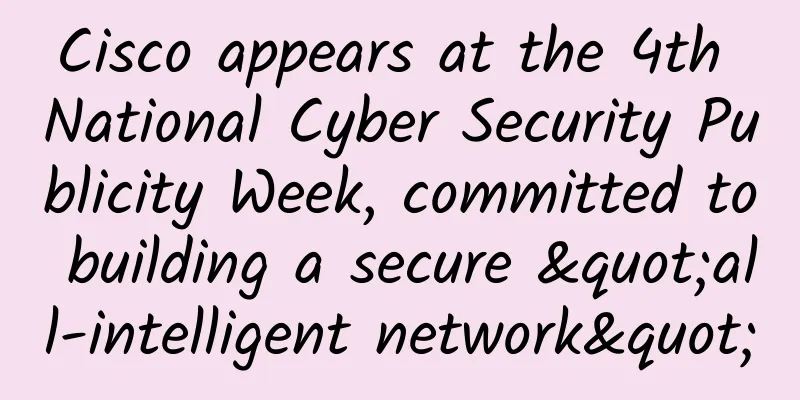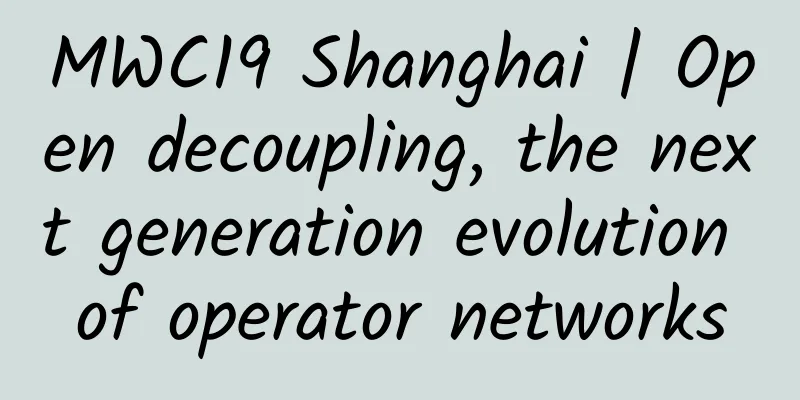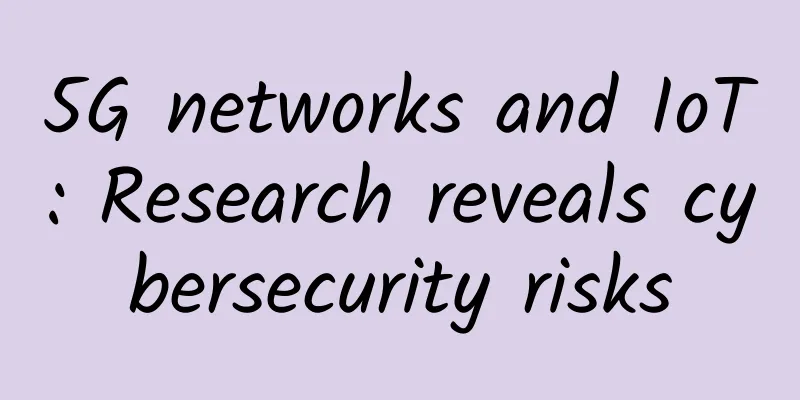Cisco appears at the 4th National Cyber Security Publicity Week, committed to building a secure "all-intelligent network"

|
[51CTO.com original article] In the golden autumn of September, the 4th National Cyber Security Publicity Week (referred to as "Security Week") has just ended successfully in Shanghai. This year's Security Week still continues the theme of last year's "Cyber Security for the People, Cyber Security Relies on the People". Compared with the previous three sessions, this year's activities are richer in content, more diverse in form, and more influential. A nationwide linkage situation has been formed. It is worth mentioning that this year, the Cyber Security Expo and Cyber Security Achievement Exhibition was set up for the first time, showing the latest and most comprehensive cyber security achievements. At the exhibition, the reporter saw the familiar Cisco booth again. This is the second time Cisco has participated in the National Cyber Security Publicity Week, and it can be said to be an "old face" of the publicity week. So what "new content" did Cisco share this time? The reporter interviewed Cisco Global Vice President and Greater China Chief Technology Officer Cao Tuqiang and Cisco Greater China Vice President and Security Business General Manager Zhuang Jingxian, and asked the two to share Cisco's latest developments and research results in participating in China's cyber security construction. Cisco in China The reporter learned that this year's Cisco booth is divided into five parts, namely: how to use Cisco's integrated security architecture method to achieve effective security; advanced malware defense, especially ransomware defense; how to use network architecture to achieve rapid detection and defense of security threats; Cisco security services: emergency services, optimization services, electronic range security training camp; Cisco security interactive classroom. It is no exaggeration to say that these five parts of Cisco's display fully convey the most advanced network security level and concept in the world, which can be said to be "full of sincerity". "When the leaders were visiting the Cisco exhibition area, we talked about how Cisco Talos shares security information with the Chinese government, including the Cyberspace Administration of China, in global cybersecurity activities." Cao Tuqiang revealed that Cisco hopes to promote the sharing of security information on a global scale, which is very beneficial to the global cyberspace security defense, and this is also something that the Cyberspace Administration of China pays great attention to and supports. Cao Tuqiang introduced that in fact, Cisco has been doing a lot of work in cultivating cybersecurity talents: Cisco and many national universities have jointly formulated talent training plans, and provided attack and defense drill laboratories, as well as security experience sharing and case analysis to help Chinese universities and the State Cyberspace Administration of China to cultivate talents and provide security information sharing. Just on June 20 this year, Cisco and the Ministry of Education of China jointly signed a memorandum of cooperation on the cultivation of digital innovative talents. Cisco plans to invest about RMB 500 million in courses, teacher training, teaching software, teaching platforms and hardware laboratories in China's education in the next three years to cultivate up to 400,000 digital innovative talents. This part especially includes the cultivation of high-end cybersecurity talents. It's time to reshape a fully intelligent network! When talking about Cisco's thinking about the network this year, Cao Tuqiang shared that nowadays, whether it is business growth, information development, or big data analysis, they are all inseparable from the network, and the network is facing unprecedented challenges - unprecedented growth in scale, complex and cumbersome configuration, and ubiquitous security threats. China is the country with the richest and most extensive Internet applications, and these applications require network support. The more applications there are, the higher the requirements for the network, and the complexity is also increasing. In Cisco's view, emerging technologies such as machine learning and artificial intelligence provide a huge driving force, allowing people to leverage them to truly create a new era of networks. The organic combination of machine learning with continuous self-learning, self-adjustment, automation, and self-protection is today's "fully intelligent network." A fully intelligent network can collect information from all IT environments through machine learning and artificial intelligence, and feed it back to the Cisco DNA platform, the "brain," so that the brain can gain in-depth understanding and then create an optimized network environment in this context. Obviously, the new network created by Cisco is predictive, which is the embodiment of the organic combination of machine learning, big data analysis, and the network. What kind of value can a fully intelligent network provide to customers? Cao Tuqiang gave an example, saying that it provides a platform for full digitalization that can truly achieve sustainable development. In the past, when an enterprise launched a new business, it took 3 months, 6 months or even longer to build an IT platform. Many corporate executives said that IT has become a business bottleneck instead of an application platform. Now, through a fully intelligent network, it can quickly adapt to the digitalization requirements of enterprises, shorten the time to launch services, and provide a truly safe and intelligent platform for the digital transformation of enterprises. A fully intelligent network, security everywhere Zhuang Jingxian said that to build a truly secure "all-intelligent network", we must first solve the problem of broken balance and restore the state of balanced confrontation between the restless attackers and the tenacious defenders. "Effective security" is a good solution given by Cisco. He emphasized that we must have a metric to judge whether security defense is effective. Cisco believes that the best metric is the time difference between an unknown threat breaking through the network and effectively discovering, detecting, and responding to it, which is the threat "detection time (TTD)". The shorter the time, the more effective the security defense deployed by the enterprise. Cisco has now reduced the average threat detection time to 3.5 hours, while the industry average is 100-200 days. This is the value that effective security can bring. How does Cisco achieve such a short detection time? Zhuang Jingxian pointed out that Cisco relies on an "integrated defense architecture" because the security defense capabilities of single-point products are limited. An integrated defense architecture that integrates network security, terminal security, and cloud security is required to achieve effective security. "The Cisco Talos threat intelligence team can provide unified security threat intelligence services worldwide. It is like the brain of a network, terminal, and cloud security defense architecture that can provide unified defense." Zhuang Jingxian emphasized that such an integrated defense architecture can help enterprises reduce their total cost of ownership by more than 38%. Reporters learned that Cisco has also launched a Cisco security solution package for ransomware such as WannaCry and Nyetya, which includes some basic entry-level ransomware solutions: first, there are Cisco firewalls, email defense and other products, which take the first responsibility of preventing intrusion; secondly, use Cisco Stealthwatch to determine whether there is any abnormal behavior through the network abnormal behavior analysis system; thirdly, use Advanced Malware Protection (AMP) to prevent their spread; finally, add Cisco security services, hoping to protect corporate customers from ransomware attacks in all aspects. Cisco's ecosystem is a "strong alliance" During the interview, Zhuang Jingxian admitted that most of the industry is operating independently in terms of security threat information, and most of the information collected is fragmented. "To do the best threat analysis, the first prerequisite is to have the most complete database. Only with the most complete database can we use the latest big data analysis platform and the best security analysis talents to produce the best security intelligence." Zhuang Jingxian said that although Cisco Talos' current analysis data is very comprehensive, it is still not enough, and Cisco also needs to work with partners to build a security ecosystem. He told the reporter a big news. Cisco and IBM Security announced in June this year that the two parties will work together to deal with the growing global cybercrime threat. Cisco and IBM Security will work closely in the fields of products, services and threat intelligence to improve customer security. This includes IBM X-Force and Cisco Talos security research team will work together to conduct threat intelligence research and coordinate the handling of major network security incidents. The reporter saw a global ranking of the best network security intelligence vendors, with Cisco ranking first and IBM ranking second. The cooperation between the first and second place will undoubtedly bring a sharp rise in the level of security defense. "In China, we are also looking for some partners because our goal is to build an ecological chain that can share more security information in China." Zhuang Jingxian said that Cisco Talos will share security information with the Cyberspace Administration of China on a regular basis, hoping to protect more users. At the end of the interview, Cao Tuqiang also described Cisco's five visions for the network. The first is to reshape a fully intelligent network; the second is to empower the multi-cloud world and make the network a supporter of the cloud rather than a bottleneck; the third is to release the value of data; and the fourth is to enrich the experience of employees and customers. He gave an example. Cisco and Apple have cooperated to allow all employees and customers who use Cisco collaboration products to use iPhones for video conferencing at work. Even if they leave the office, they can continue video conferencing smoothly on the road with their iPhones. There is no need to interrupt the connection between applications and devices, but to switch seamlessly. The last and most important point is that security is everywhere. When threats and attacks become pervasive, security becomes more and more important. "Cisco helped the world build networks and the Internet. Now, Cisco also has the responsibility to make networks more secure," said Cao Tuqiang. "Heroes are made by the times. The times give us responsibilities and requirements. Now is the time to reshape the network." [51CTO original article, please indicate the original author and source as 51CTO.com when reprinting on partner sites] |
<<: In which industries can blockchain be applied?
>>: What are the interference protection measures for the computer room's integrated wiring system?
Recommend
Ruijie attends the Smart Airport Construction and Development Summit! Giving airports smart wings
From April 17 to 19, the 4th "National Civil...
Unleash the value of the document middle platform ecosystem and empower digital innovation for government and enterprises
[51CTO.com original article] With the popularizat...
RackNerd: 10-40Gbps unlimited traffic servers starting at $509/month, Los Angeles/New Jersey/London/Montreal data centers
The tribe has shared information about RackNerd m...
These 8 IT infrastructure terms IT practitioners should know
IT infrastructure is changing rapidly. Specifical...
Bluetooth 5 and its role in the Internet of Things
What is Bluetooth 5? If you own a car or a smartp...
QuantumCore: Australian VPS 1 AUD per month for the first three months, 1G memory/30G NVMe hard drive/1TB monthly traffic
The tribe once shared information about QuantumCo...
How Apple's iCloud Private Relay powers enterprise VPNs
Apple's iCloud Private Relay service offers p...
BGPTO: 50% off on Singapore dedicated servers, E3-1230v3/16GB/480G SSD/10M only 325 yuan
BGPTO is a foreign independent server sales site ...
Image Gallery: TCP/IP Protocol Suite and Security
OSI and DoD Reference Model Relationship between ...
[Practical Record] Shanghai Jinjiang International HRG's IT Informationization Advancement Path
[51CTO.com original article] China's business...
[11.11] CMIVPS recharge 10% off, 30% off for all VPS annual payments, buy 10 months of dedicated server and get 2 months free
CMIVPS released this year's Double 11 promoti...
User says | IPL helps medical experimental training to get on the fast track
Anhui Medical College is a public general college...
Hypere: £12/quarter KVM-AMD Ryzen9/2GB/70G NVMe/10Gbps unlimited traffic/UK data center
Hypere should be a relatively new foreign hosting...
What is Wi-Fi-6E and how is it different from Wi-Fi-6
Three years ago, Wi-Fi 6 technology entered the m...
Do you know how much power 5G actually consumes?
5G is one of the hottest topics at the moment, an...









